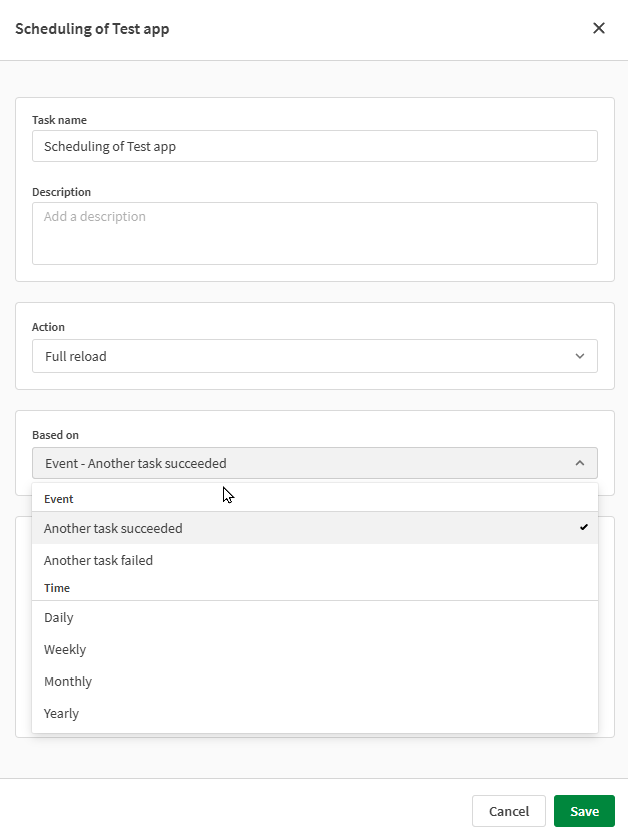Creating task chains for data refreshes
In the context of analytics data refreshes, a task chain is a set of tasks configured with event-based schedules that depend on one another. You can create task chains that refresh apps, scripts, data flows, and table recipes in a specific order. For example, you could run three data flows, one after the other, and after these events, reload an app to collect and analyze the data from these data flows.

Starting a task chain
To start a task chain, you need to create a dependency between the current task and an existing task.
Do the following:
-
Create a task (for an app, script, data flow, or table recipe) that refreshes data on a time-based schedule.
-
Create another task. When configuring the task, under Based on, select one of the following:
-
Another task succeeded
-
Another task failed
-
-
Select the Space, Content, and Task that you want to link to your current task.
-
Click Save.
In this way, you can chain together many different tasks.
To create a task chain, create a task with an event-based schedule.

Example
For example, you could configure the following chain:
-
Task 1 reloads an app at a specific time.
-
When task 1 completes, task 2 runs a script to export QVD data.
-
When task 2 runs successfully, task 3 runs a data flow to export additional QVD data.
-
When task 3 runs successfully, task 4 reloads a second app. This app combines the data loaded by each of these assets.
Permissions
A task chain is simply a set of multiple tasks that have dependencies between them. You need to have the required permissions in each resource's space to be able to establish a task chain and run the chain successfully.
To create and manage tasks for analytics data refreshes, you need the following permissions:
-
Professional or Full User entitlement in the Qlik Cloud tenant
-
For an app, script, data flow, or table recipe in a shared space, you need one of the following space roles in the shared space:
-
Owner (of the space)
-
Can manage
-
Can edit data in applications
-
Can edit
-
-
For an app, script, data flow, or table recipe in a managed space, you need one of the following space roles in the shared space:
-
Owner (of the space)
-
Can manage
-
Can operate
-
You can also create and manage tasks as a tenant or analytics administrator. However, you also need the required space roles in the space (see above) if the resource is in a shared or managed space.
For more information about permissions in shared and managed spaces, see:
